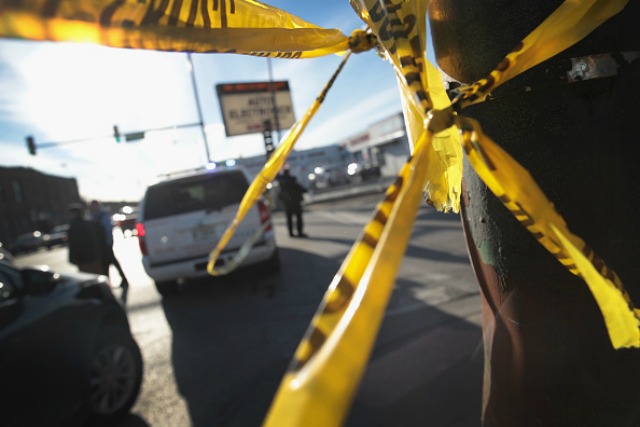More Than 1000 People Have Been Shot In Chicago In 2017. Can The Violence Be Curbed?
By Stephen Gossett in News on Apr 25, 2017 9:24PM

Getty Images / Photo: Scott Olson
Chicago transitioned into 2017 over a violent New Year's weekend. Recently, gun violence spiked again over a bloody Easter weekend, which saw 45 shot. Between those poles, there were many high-profile deadly assaults, like the devastating mass shooting in South Shore last month. With all the victims added together, Chicago recently passed a dark benchmark: More than 1,000 people have been shot in the city so far in 2017, according to the Tribune.
At least 1,008 had been shot as of early Tuesday morning, the Tribune reports. That figure climbed further still through the afternoon. At least three more people were shot, one fatally, between 6:20 a.m. and 3:27 p.m. on Tuesday. The city reached the ignominious marker even sooner than it did last year, when the city's highly publicized (and often improperly contextualized) violence took national stage—a trend that stubbornly persists. (See the Justice Department's latest misguided slam on the city, as it seeks to draw parallels, but not proof, between immigration and violence.)
But despite the often ham-fisted framing, Chicago's violence crisis is real. And with more 1,000 people already victims this year, it seems appropriate to remember some of the most convincing proposed counter-measures.
For one, gun violence needs to be considered from a public-health perspective, researchers have argued. “Gun violence killed about as many individuals as sepsis," according to a Journal of the American Medical Association study released in January. "However, funding for gun violence research was about 0.7 percent of that for sepsis and publication volume about 4 percent. In relation to mortality rates, gun violence research was the least-researched cause of death and the second-least funded cause of death after falls."
And the trauma caused by violence self-perpetuates into more violence, experts have concluded. Training for front-line educators on how to work with children who have been left unable to properly regulate emotion due to trauma exposure is vital, health experts argue.
And more than tougher sentencing or beefed-up law enforcement, reinvestment into the most affected, underserved communities—which have seen hopelessness fueled as schools close and job opportunities diminish—is key, according to some criminologists. Lax gun laws in neighboring states and diminished resources for anti-violence programs don't help either.
It would be beyond pollyannaish to pretend any easy solutions exist. The crux of a study by the University of Chicago’s Crime Lab was essentially there's nothing close to a silver bullet. But as the number of victims outpaces last year's decades-high total (and parachuting media and politicians will no doubt be all too happy to mischaracterize) it's important to bear in mind that many of the most promising potential fixes still are still waiting on the table.